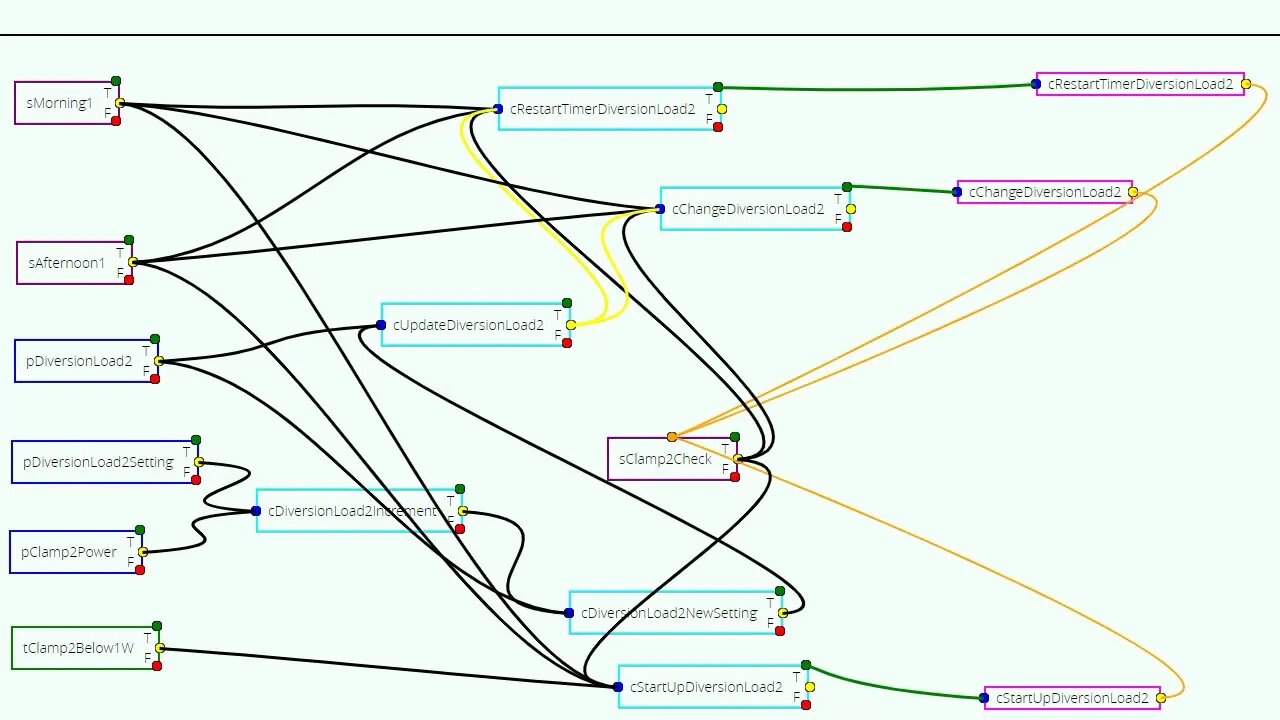Premium Only Content

AC Diversion Load, Part 5
Reworked the PL code to work with the positive/negative power readings that were unlocked in the previous video.
It's amazing what knowing the actual power and direction of flow makes in the code. Before, it was a guessing game and now it's a simple computation.
This is my first time working with "conditional values" in PL along with logic expressions in actions. The Vera controllers use the Lua programming language and PL uses a Lua-like syntax as well. On thing that's "missing" is you can't have assignment expressions, like a=b+c. Instead, you need to make a condition called "a" and determine it's value as the result of (b+c). Then you can use the value in "a" as a variable in other expressions. I like to keep expressions simple and compute just one thing at a time. This helps as you can see the intermediate results.
The key to this computation was to keep everything in floating point. My original code was integer-based and had a problem when it kept ignoring small ~1 watt changes in power. Over time those small changes would build up and until there was a big change of 7 or more watts, nothing would happen. With the floating point code, you keep accumulating the changes and once that rounds up or down to a different number, a change is made.
The other key point is to have only ONE variable tracking the dimmer setting. Before I had tried to use a counter to handle incrementing/decrementing the dimmer setting, then writing that counter value to the dimmer. This was before I figured out the "conditional values" and was an easy way to add or subtract numbers in a variable. However, this created a problem in that the counter and the dimmer could get out of sync. Moving to just having a device property that follows the dimmer setting solved that issue. With only one copy, it can't get out of sync. It also allows manually adjusting the dimmer to see how the code reacts.
Also tried to incorporate features into the code to reduce Z-Wave network traffic as well as spread that and the CPU load out in time. This should help reduce bottlenecks and synchronization issues. For example, the time delay between getting the power sample and then acting on any changes allows all the computations to take place before the logic that makes changes runs.
Hardware:
In-wall dimmer: https://amzn.to/3qughPz
Ceramic heat lamp https://amzn.to/3jpdcP8
HEM Gen5 https://amzn.to/3iEgf4i
More to come, seeing what other features are possible with this code...
Subscribe for more content like this
Comment, rate, share & click the bell icon
And as always, thanks for watching
Intro/Outro:
Louisiana Fairytale by Austin Rogers
https://web.archive.org/web/20170402222425/http://drfiddle.com/show_tune.php?id=94
-
 LIVE
LIVE
Alex Zedra
1 hour agoLIVE! New Game!
190 watching -
 LIVE
LIVE
Man in America
9 hours agoEric Trump on Prosecuting TREASON, Civil War & the Battle of Good vs. Evil
709 watching -
 LIVE
LIVE
Barry Cunningham
2 hours agoBREAKING NEWS: PRESIDENT TRUMP BROKERS HISTORIC PEACE DEAL IN THE MIDDLE EAST! AND MORE NEWS!
5,816 watching -
 LIVE
LIVE
SpartakusLIVE
4 hours agoThe Boys are BACK || The Duke of NUKE and his Valiant Knights of the Tower of POWER
234 watching -
 LIVE
LIVE
Nikko Ortiz
1 hour agoWe Chillen... | Rumble LIVE
102 watching -
 1:15:32
1:15:32
Tucker Carlson
2 hours agoICE Protests and Antifa Riots: Tucker Carlson Warns of Total Destruction if America Doesn’t Act Fast
2.7K101 -
 LIVE
LIVE
I_Came_With_Fire_Podcast
9 hours agoChinese Spy GETS OFF | Is Comey's Indictment Selective | Posse Comitatus Dilemma
95 watching -
 LIVE
LIVE
Adam Does Movies
11 hours agoTalking Movies + Ask Me Anything - LIVE
38 watching -
 5:46
5:46
Gun Owners Of America
8 hours agoNew Data Shows Voters Want Pro Gun Politicians
3782 -
 9:22:30
9:22:30
Dr Disrespect
11 hours ago🔴LIVE - DR DISRESPECT - BLACK OPS 7 - BANG BANG BANG
124K5
